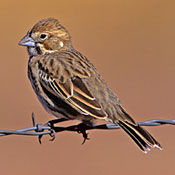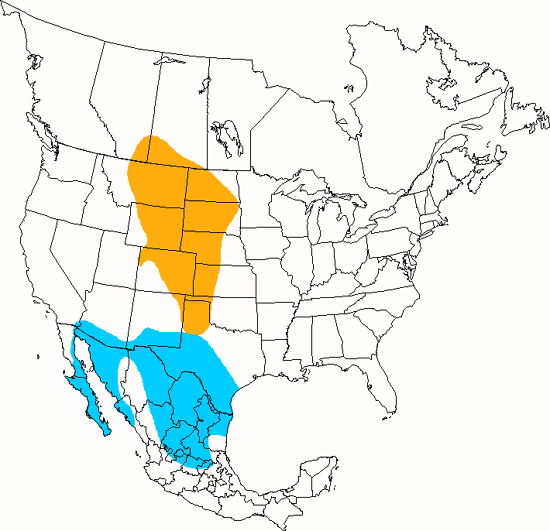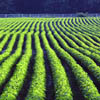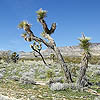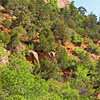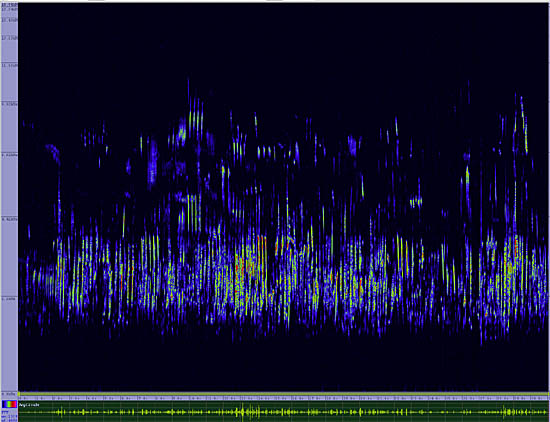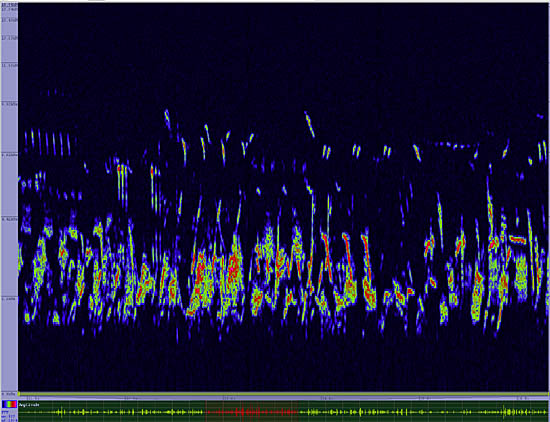Lark Bunting
Calamospiza melanocorys

Perching

Length: 7 in. (18 cm )
On the breeding grounds of open fields and prairies, the male is conspicuous as it gives its flight song high in the air and descends in a great flutter of wings. The grass nest is hidden on the ground under grass bunches. Food in the summer is largely insects. During the winter this species forms large and obvious flocks in open fields where they feed on seeds. The males look like females during the winter.
The four-digit banding code is LARB.
Bibliographic details:
- Article: Lark Bunting
- Author(s): Dr. Biology
- Publisher: Arizona State University School of Life Sciences Ask A Biologist
- Site name: ASU - Ask A Biologist
- Date published: 13 Jul, 2017
- Date accessed: 9 October, 2025
- Link: https://askabiologist.asu.edu/activities/bird/lark-bunting
APA Style
Dr. Biology. (Thu, 07/13/2017 - 15:37). Lark Bunting. ASU - Ask A Biologist. Retrieved from https://askabiologist.asu.edu/activities/bird/lark-bunting
Chicago Manual of Style
Dr. Biology. "Lark Bunting". ASU - Ask A Biologist. 13 Jul 2017. https://askabiologist.asu.edu/activities/bird/lark-bunting
MLA 2017 Style
Dr. Biology. "Lark Bunting". ASU - Ask A Biologist. 13 Jul 2017. ASU - Ask A Biologist, Web. https://askabiologist.asu.edu/activities/bird/lark-bunting
Be Part of
Ask A Biologist
By volunteering, or simply sending us feedback on the site. Scientists, teachers, writers, illustrators, and translators are all important to the program. If you are interested in helping with the website we have a Volunteers page to get the process started.



